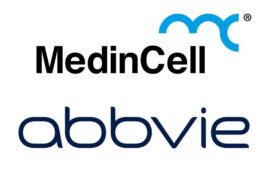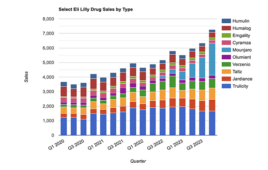ADME-Tox gets a new face as more efficient systems are brought on board and collaborations with regulators ensue.
 click to enlarge Researchers at Southern Research Institute work within the HPLC and tandem mass spectrometry laboratory. (Source: Southern Research Institute) |
ADME and toxicology screening are some of the most resource-intensive aspects of drug discovery research. When considering the need to look for drug effects within many disparate organ systems, the distribution of the drug in the body, its excretion, and a multitude of potential toxicities, it’s no wonder that these programs often become bottlenecks, and that there is a thunderous demand for newer, faster, and better technologies. Recent years have seen a dramatic rise in CROs dedicated solely to these types of services, and major vendors are scrambling to meet the demand for new technologies.
Just as novel technologies are infiltrating the early phase discovery process, so too are genomics, proteomics, gene therapy, and systems biology methods appearing in ADME and Tox labs, reinvented as toxicoproteomics, toxicogenomics, in silico screening, among others. Old standbys like the cytochrome P450 assay are being updated with the latest advances in UPLC and mass spectrometry screening. For in vivo Tox assays, the zebrafish is rapidly gaining popularity as a model organism. Zebrafish are inexpensive, and changes in clinical pathology, hematology, urology, and other systems can easily be visualized in the fish or its embryo. Transgenic in vivo models (of zebrafish and other animals) are increasingly being used to zero in on specific needs and applications, such as pediatric indications, for example.
On the in vitro side, the trend is for increased automation and faster high-throughput screening, with an emphasis on finding new, valid models. Greg Gorman, PhD, is the director of toxicology and bioanalytical Sciences for Southern Research Institute, Birmingham, Ala. Southern Research Institute is a non-profit network of research centers, which provides services for private and public sector clients, including an extensive menu of ADME and toxicology services. According to Gorman, one of their clients’ greatest needs is for in vitro metabolic stability assays for oral drugs. “That is the intended use of drugs for most people. They would rather take a pill, a capsule, or a liquid. The stomach is the first pass metabolism going to the liver. We’re doing metabolic stability in high- throughput format … applying robotics and other high-throughput platforms to in vitro metabolism.”
 After sample preparation, compounds are loaded into a Waters ACQUITY Ultra-Performance Liquid Chromatography (UPLC) System for ADME analysis and data processing. (Source: Waters Corporation) |
The need for speed
One of the most visible bottlenecks to scientists, because it confronts them on a daily basis, is in the chromatography stage of high-throughput screening. UPLC has largely replaced HPLC, but even when replacing “high performance” with “ultra performance”, there are still delays in the massive HTS process. One of the technical improvements being introduced in newer UPLC systems is the use of smaller particles, 2µ as opposed to 5µ. The smaller particles give better sensitivity and better resolution, but with up to seven times greater pressure from 2000 to 15,000 pounds per square inch. One vendor offering a system that can handle this kind of pressure is Waters Corporation, Milford, Mass. Darcy Shave, business manager for Waters, Pharmaceutical Business Operations, describes the typical tradeoff between HPLC and UPLC in terms of quality versus speed of data acquisition: “HPLC can take five to 20 minutes per sample, which is too slow in comparison to plate readers. While significantly faster, plate readers don’t provide high quality data for analysis. With the ability to run ADME samples in 30 to 60 seconds, UPLC combines the speed desired with high quality LC data needed to more effectively evaluate samples.” Waters now offers a solution designed to provide both fast results and high quality information in the Acquity UPLC.
Robotics and automated sample handling are another area of intense activity in ADME and Tox technology development. Velocity11, Menlo Park, Calif., offers two screening platforms with extensive automation: the Biocel, and the Element. The systems are designed with a capacity of hundreds to thousands of plates in a single campaign. Debra Toburen, senior product manager for integrated systems for Velocity11, is tracking an increase in pharmaceutical customers wanting to shift ADME into HTS screening earlier in the pipeline. “A continued trend in our pharmaceutical customers is the requirement to process more compounds through ADME-Tox assays earlier in the drug discovery process; not just as a secondary screen, but even as a primary screen,” she says. “With this increase in demand customers are turning to flexible automation solutions. Velocity11 works with customers to automate ADME-Tox assays, as well as other assays, resulting in increased throughput and reduced cycle times.”
The other heavyweight technology in the ADME and Tox environments is mass spectrometry. And as with UPLC, the message is all about speed. The latest offering from Applied Biosystems, Foster City, Calif., is the FlashQuant Workstation—a MALDI MS with triple quad detection, which, in combination with the Discovery Quant software, reduces a typical analysis time of 30 seconds down to three seconds. Nick Levitt, senior product manager in the Proteomics and Small Molecule Division of Applied Biosystems calls it a “disruptive technology.” The Discovery Quant software, released in November, is an important adjunct to the mass spec system, streamlining the cumbersome data analysis process. Says Levitt, “A traditional mass spec system uses liquid chromatography to actually separate the compound and get it into the system using different kinds of ion spray technologies … whereas in a MALDI system, you’ve got a high intensity laser. … It vaporizes the sample, which floats up and goes into the mass spec, directly from a solid to a gas. Instead of dealing with a lot of plumbing and slowly getting samples running through the system, you are essentially rastering the laser across a spot, and getting the samples. They just have to be sucked into the mass spectrometer. It’s a much faster system, in terms of throughput.”
Bioinformatics beyond data analysis
Because of the huge and increasing quantity of data produced in compound screening, bioinformatics and data handling are taking on increased importance. Says Gorman, “What people have discovered is that you generate a ton of data. There are advances in the bioinformatics front, that even though you can begin to collect data more cheaply, you generate much more quantity of data. You have to in some systematic fashion put it together and draw valid conclusions.” Tools for data analysis draw on information technology resources, such as artificial neural network programs, relational databases, and principles of systems biology.
An extension of the processing and manipulation of experimental data is the field of predictive toxicology. Predictive toxicology and in silico screening can reduce costs and increase efficiency by narrowing the field of drug compounds earlier and making valuable predictions about efficacy. The use of cell-based assays is an important companion to these studies, providing a way to test predictions, and feed new data into the model.
Pursuant to the ideals of predictive toxicology is a new program launched by the US Food and Drug Administration (FDA) in 2007 called ToxCast. ToxCast laboratories will be creating computational models to predict the toxicity of various molecules in the environment, with the ultimate goal of giving the US Environmental Protection Agency (EPA) practical information for prioritizing toxicity studies on chemicals. ToxCast will be based on data from HTS assays from the pharmaceutical industry, and although its intended application is environmental, the principles upon which it operates are the same, meaning that ToxCast will become an important resource for pharmaceutical toxicology studies.
Caliper Discovery Alliances and Services (CDAS), based in Hopkinton, Mass., is one of eight contractors through the EPA to build predictive assays. They are using 240 different target-based assays to build a database of interactions or biological effects of environmental chemicals. The data from these studies will go into the EPA database, correlating known toxicity from previous animal studies, which in turn will be used to build predictive models. Says David Manyak, executive vice president of Caliper Life Sciences, “Even though this is geared towards environmental chemicals, many pesticides have similar targets to human pharmaceuticals … there are common toxicity mechanisms among all animals. The predictions that are developed under the ToxCast program will have a great degree of relevance to pharmaceutical development.”
Pursuant to these goals, the National Institutes for Health (NIH) and EPA recently announced a new collaboration to use the robotic screening technology at NIH’s Chemical Genomics Center to run predictive toxicology studies using cellular and in vitro assays, reducing reliance on animal studies. The goals of this study are outlined in an article in Science (Transforming Environmental Health Protection. Collins FS, Gray GM, Bucher John R. Science. 15 February 2008. pp. 906-907.). The article outlines an ambitious plan to transform EPA toxicology testing, shifting away from reliance on in vivo animal models, and using in vitro, cellular, and in silico studies instead.
As an example, one important area of study in environmental toxicology that has direct relevance to the pharmaceutical industry is endocrine disruptors. These chemicals, which mimic mammalian hormones such as estrogen, may interact with hormone receptors. Such a chemical, in a pesticide perhaps, may not always be identified using animal studies in rodents. But if it interacts with the estrogen receptor, and interferes with the normal interaction between estrogen and its receptor in the body, that could have important implications for human health and for drugs intended to act on those same targets.
With the ever-increasing push for more and faster high-throughput Tox and ADME screens, data management and predictive technologies have gained equivalent importance with the separation and detection technologies used in the assays themselves. Collaborative efforts such as ToxCast and the new NIH/EPA collaboration are leveraging these tools for the benefit of the entire scientific community.
About the Author
Catherine Shaffer is a freelance science writer specializing in biotechnology and related disciplines with a background in laboratory research in the pharmaceutical industry.
This article was published in Drug Discovery & Development magazine: Vol. 11, No. 5, May, 2008, pp. 36-38.
Filed Under: Drug Discovery




